Világsztárok Magyarországon – Herbie Hancock és a „Gershwin’s World” a BKK-ban (2005. május 25.)
2020. november 15., Maloschik Róbert
Az egész 2004 őszén kezdődött, mikor is e-mailt kaptam Herbie Hancock menedzsmentjétől, hogy 2005 májusában szeretne egy turnét lebonyolítani, amelyben európai közszolgálati rádiók szimfonikus zenekaraival adná elő a „Gershwin’s World” című 1998-os lemezének anyagát. Érdekel-e, mert csak öt koncert lesz, s Budapesten mindenképpen szeretne fellépni a világsztár amerikai zongorista.
Erre szokták mondani „lehet egy ilyen ajánlatot visszautasítani?”.
Nos, felmentem a Magyar Rádió akkori elnökéhez, Kondor Katalinhoz, és elmagyaráztam neki, hogy ez az egész rádiónak dicsőség lenne, a Magyar Rádió Szimfonikus Zenekarának pedig különösem emelné a hírnevét, hisz ez olyan lenne nekik, mint ha például a klasszikusok közül Daniel Barenboim lépne fel velük. Már csak abba kellett beleegyeznie, hogy HH borsos gázsiját kiegyenlítse elnöki keretéből. És beleegyezett.
Ezért utólag is kalapemelés és kézcsók Kati!
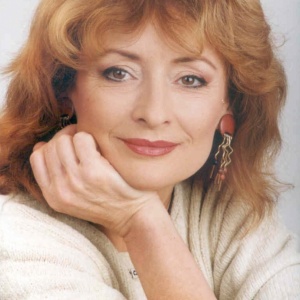
Nos, Bartók Rádiós szobámba visszatérve azonnal küldtem a válasz e-mailt a Magyar Rádió részéről minden rendben. Jött is a válasz, már csak egy Fazioli F308-as zongorát kell biztosítanom, mert Hancock csak azon hajlandó játszani… Felhívtam a Budapest Kongresszusi Központot, van-e F308-suk. Kiderült egyáltalán nincs Fazioli zongorájuk. Kiderült Magyarországon nincs F308-as! Így hát rádiós irodámból felhívtam Paolo Faziolit (1944), hogy segítsen. Mondta, nem kell Olaszországig utaznom a zongoráért, mert a bécsi Stingl szalonban van F308-as. Odaszól a bolt vezetőjéhez, hogy május 25-re biztosítson nekem egy nagyon jó karban lévő Faziolit, és szállítsa ide a koncertre. Így is lett, fél óra múlva már is e-mailezett Paolo bácsi, hogy el van intézve! (És tényleg, 2005. május 25-én délután 3-kor megérkezett a zongora két szállító hozta furgonon. De eljött a bolt tulajdonosa Gustav Sych is, kipödrött bajusszal.)
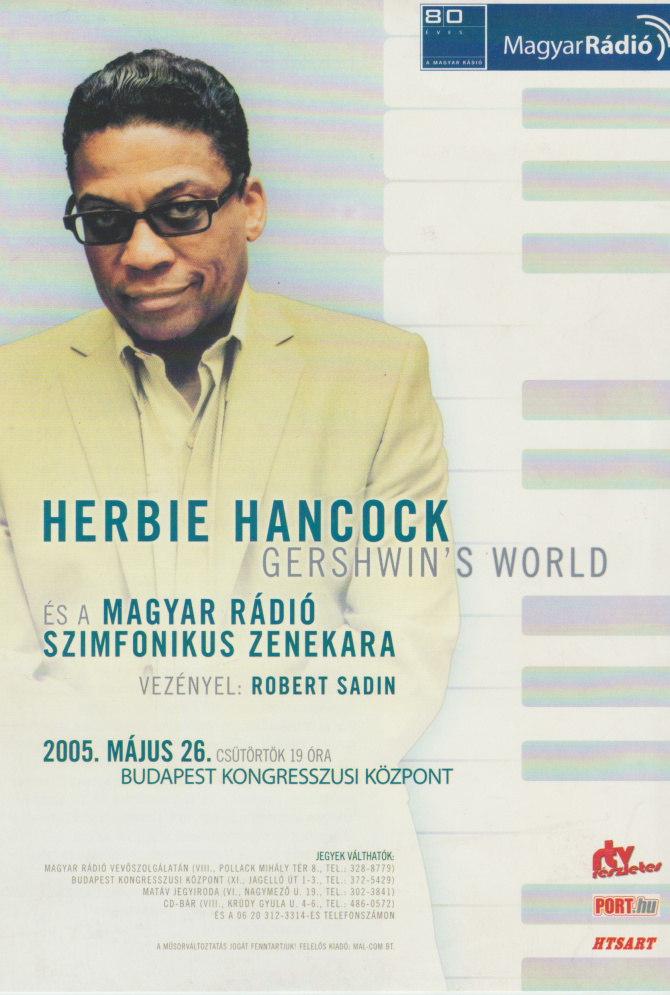
Közben történt más is… Hancock menedzsmentje megírta, hogy kellene magyar vízum a gitárosnak, Lionel Loueke-nek. Erre felhívtam a New York-i magyar irodát, hogy XY vagyok és kapcsolják a főnöküket, mert ebben az ügyben csak ő tud segíteni. Kiderült, hogy ő Polgár Viktor (Polgár Dénes híres magyar újságíró fia). Elmondtam neki, hogy Lionel-nak kellene egy magyar vízum, mert jönne Herbie Hancock-kal játszani, és nincs vízuma. De mikor kiderült, hogy Loueke benini állampolgára, akkor Viktor mondta, az egy kicsit problémás lesz, mert Magyarországnak nincs diplomáciai kapcsolata Beninnel. De kérte, hogy LL menjen be hozzájuk, és meglátja, mit tud tenni. Egyből írtam Amerikába, hogy Lionel azonnal menjen be. És pár nap múlva már a kezében is volt a vízum!
Ezért utólag is kalapemelés Polgár Viktornak!
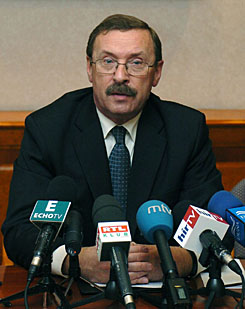
2005. április 13-án a következő phoner-t készítettem (me and Christina Pocsai, you know!) Herbie Hancock-kal a Magyar Rádió 24. stúdiójában magyar idő szerint este 9-kor, mert HH előtte megírta, hogy általában délben ébred fel, mert éjjel sokáig szöszmötöl. Ja, és ő hívott bennünket!
HH: Hello!
MR: Hello!
HH: Yes.
MR: May I speak to Mr. Herbie Hancock?
HH: Yes, this is Herbie Hancock.
MR: Hi Herbie. I'm Robert Maloschik the jazz editor-in-chief of The Hungarian Radio.
HH: Oh, hi! How are you, Robert?
MR: Thank you, fine. At first let me congratulate for your 65th birthday.
HH: Yes, it was my 65th.
MR: Let me introduce to you my collegue who is a jazz singer and will be the MC of your May 26th concert here in Budapest.
PK: Hi, I’m Kriszta Pocsai. If I remember well you would come to Hungary for fourth occasion. At first you were here in the 80’s and played a duo concert with the Hungarian bassist Aladar Pege. And then you came with the Miles Davis Tribute Band at the end of 1992. And thirdly you came with Michael Brecker, John Scofield, Dave Holland and Jack DeJohnette in 1997. But this is the first time to come to play with a Symphony Orchestra. And we are very proud that this Orchestra is the Hungarian Radio’s Symphony Orchestra. So what kind of impressions do you have about Hungary?
HH: Oh! Hungary is a very... culturally oriented country, you know. People very do support music and art. And they’re very enthusiastic about... and passionate about music and about jazz.
PK: Do you know or do you like any Hungarian composer?
HH: Like which ones for example?
PK: In classical music or in jazz? Do you know any of them?
HH: Yes, name some.
PK: Name some?
HH: Give me the name of some.
PK: Bartók Béla, Bela Bartok.
HH: Oh! Of course.
PK: For example.
HH: Of course a lot of Bela Bartok.
PK: Yeah, he is the most famous.
HH: Right.
PK: I think. Do you know his work?
HH: Yes, I played his work, you know, many times. I’m very much influenced by Bela Bartok’s music. And who are the other Hungarian composers?
PK: I know a pianist who is now your student, Cumó and I think he also compose.
HH: Oh, yes. He’s the greatest from Hungary. Right, right. He exactly very, very talented.
PK: Did you ever play with Hungarian jazz musicians beside Pege?
HH: I’m sorry but I don’t remember which ones.
PK: In your opinion is there any young man in the jazz life who would be a great musician in the near future?
HH: Oh yeah! In the matter of fact the guitarist I’m bringing with me. His name is Lionel Loueke. He’s extremly talented. He’s gonna be a major artist for jazz in the future.
PK: He’s a guitar player.
HH: Yes.
PK: And he also sing I heard it.
HH: And he sings, too. Yes. Very talented guy.
PK: What do you think what would be the next direction in jazz music in the 3rd millenium?
HH: Well, I can tell you that one person that’s leading the leading force for a new direction’s in the new millenium is Wayne Shorter. His music is very difficult to describe but it is powerful, very unexpected and he seems to be going into a musical territory that nobody else is exploring.
PK: OK, and now some questions about „Gershwin’s World”. I mean how did you choose Gershwin?
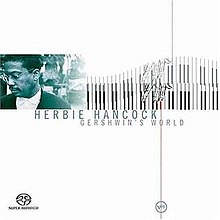
HH: Actually it was a suggestion from Bob Sadin who will be conducting the Orchestra and he’s also the producer of the record I did, called „Gershwin’s World”. We originally did that record to celebrate the birthday of Gershwin.
PK: And how did you meet him? It was a first occasion?
HH: With Bob Sadin?
PK: Yes, Bob Sadin.
HH: I met him... originally I met him in Washington, D.C. at the Kennedy Center’s honours every years the president of the United States give an award five people from the performing arts. And I’m in the nominee committee. And Bob Sadin actually was involved with writing some arrangements of the music that was celebrating I think Stephen Sondheim. Who did the lyrics for „West Side Story”, you know. And of course Leonard Bernstein did the music. They did an arrangement of „Maria”. Very famous song from the „West Side Story”. And that Kathleen Battle sang. And it was so gorgeous I wanted to meet the person who did the arrangement. And it turned out that was Bob Sadin. Anyway after that I wanted to work with him. To do something with him and maybe a year later I received a letter from him suggesting that maybe we could work on a project celebrating George Gershwin’s music.
PK: And here it is. You told us about Lionel Loueke the guitar player but how did you choose Dave Carpenter and Richie Barshay?
HH: OK! I met Dave Carpenter at a recording session with a... with that drummer...
PK: Harvey Mason...
HH: Harvey Mason, exactly. How did you know that?
PK: I didn’t know but Robert did.
HH: Yeah, yeah.
PK: And he whispered.
HH: Yes, he’s exactly right, it was Harvey Mason’s recording session. Strangely I actually received a Grammy Award for the one song I did on Harvey Mason’s record. And that was the song Dave Carpanter was on. So I get the chance to hear him at the session. I liked his sound and I liked the way he approached the music. And there was an opportunity to use him on some concerts where I was performing with Symphony Orchestras in the past. And he did very well. He has an understanding the best way to involve himself in that situation. To involve himself musically in that situation. And so I’ve been continuing to use him on bass for the Symphony concerts.
Richie Barshay, I met him when he was 19 years old, thanks again to Bob Sadin who really discovered him. And when we were looking for a kind of drummer percussionist to work with the Orchestra. Because we thought that percussion instruments work better with an orchestral setting than regular jazz drums. The perfect combination we believed a drummer who has a strong sense on the colours and spices of percussion. And he came across with Richie Barshay who does that. And so he brings drums and also brings tablas and djambes and various percussion instruments and percussion sounds which works very well with the orchestra. He’s a very talented young musician. His proper time in his playing is a straight ahead drum, very clear, he has very good beat and very professional.
PK: Your carrier is a never ending success story. One Oscar and nine Grammy Awards. The latest in this February. What is the next challenge for you?
HH: Actually ten Grammy Awards now.
PK: Ten Grammy Awards. It’s a much bigger success story. And the next challenge for you?
HH: The next challenge for me?
PK: Ya.
HH: Is to wake up tomorrow morning.
PK: After your birthday party.
HH: You’re right.
PK: Your wife said that you are now very busy with your newest album. It would be a collection of original composition of yours or maybe the newest standards? What kind of album will it be?
HH: It called, the name of the album is „Possibilities”. And it’s a collaboration between myself and several artists from different genres. You know, some from the pop scenes, some from the rock scenes and some from the alternative rock and folk scenes. Some from latin, some younger artists and some more established artists. And many combinations. Some from the classical scene also.
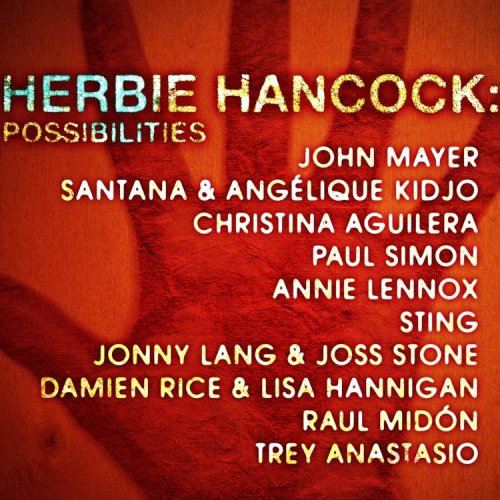
PK: Can you tell us some names?
HH: Yes. One artist is John Meyer, he’s a young pop artist. Sting, he did a track. Paul Simon did a track. Carlos Santana did one along with Angélique Kidjo, she’s a singer. And Annie Lennox did one track. Trey Anastasio, he is the leader of the group Phish. They are a jam band, they improvise but in the rock genre. Some people compared them to Grateful Dead. I also did a track with the young Irish artist named Damien Rice. I call his music some kind of alternative rock. This is very special, there is improvise quality of him but far from jazz direction. He’s a singer and he plays guitar, and he has a female singer in his band, and a cello and drums and bass. It’s very interesting sound and the music is very passionate.
PK: So it would be a very colourful album. I’m wishing you the best.
HH: Oh, thank you. They were actually in the process of recording some new artists I mean for this record. Christina Aguilera we had to be on the recod.
PK: Really?
HH: Yeah, and Stevie Wonder agree. Peter Gabriel agreed to be on the record but then he were unable to do it. There are many more artists I didn’t mention like the Black Eyed Peas is gonna do it, Justin Timberlake wants to do it, Aretha Franklin wants to do it. It’s a very very big project.
MR: And it would be a double CD?
HH: Could be double CD but I think I’m gonna is to half. Some tracks would be downloadable from the internet. They may not on the CD but they would be the part of the same project. Because I’ve been trying to figure out how can we have one project that is not limited by the size of a CD. We put something’s online and we not limited. And as a matter of fact we’ve been thinking about if it has, you know, in the degree of success we don’t have to stop it. We can just make it an ongoing project. I continue to collaborate with different artists for years. I think it’s a really new idea.
PK: Thank you for the interview.
HH: Oh, you welcome.
PK: And I hope to meet you in Budapest.
HH: We intend to bring surround sound for the European tour and hopefully we could use this in Hungary, too. That would be very interesting a Symphony Orchestra with surround sound.
MR: So don't forget we will wait for your arrival at Budapest Airport on 25th of May.
HH: Right, exactly.
MR+PK: Thanks you very much.
HH: Thank you.
MR+PK: Bye-bye.
HH: Bye-bye.
Aztán megérkezetek az amerikai zenészek egy keddi napon 2005. május 24-én. A Magyar Rádió Szimfonikus Zenekarának tagjai nagyon izgatottak voltak, de nagy csalódásukra csak Robert Sadin karmester jött el a 6. stúdióba a próbára. A maestro le volt nyűgözve a magyar zenekar teljesítményétől, és ennek hangot is adott. Én meg bemutattam neki Kovács László karmestert, mondván ő tanította be nekik a „Gershwin’s World” koncert anyagát. Sadin Lacinak külön megköszönte, hogy ilyen ragyogó munkát végzett.
Közben a többiek a Royal Szállóban pihenték ki a hosszú repülőút fáradalmait.
Másnap a Budapest Kongresszusi Központba elsőként a Fazioli F308-as zongora érkezett meg. A szállítók egyből a színpadra vitték, hogy a Magyar Rádió zongorahangolója kezelésbe tudja venni. Gustav Ignaz Sych boldogan pödörgette bajuszát miután megismerkedett velem.
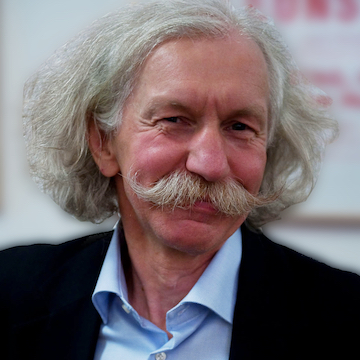
Nem sokkal a bécsi transzport után jött a német hangmérnök hölgy is, aki a koncert 5.1 surround hangzását biztosította. (A koncerten kapkodták is a fejüket a hátsó sorokban ülő nézők, mert nem értették, hogy mögülük is szól a zene.)
Azután 5 óra körül megjött Herbie Hancock is! A folyosón először Szász Gabriellát (my wife, you know!) köszöntötte.
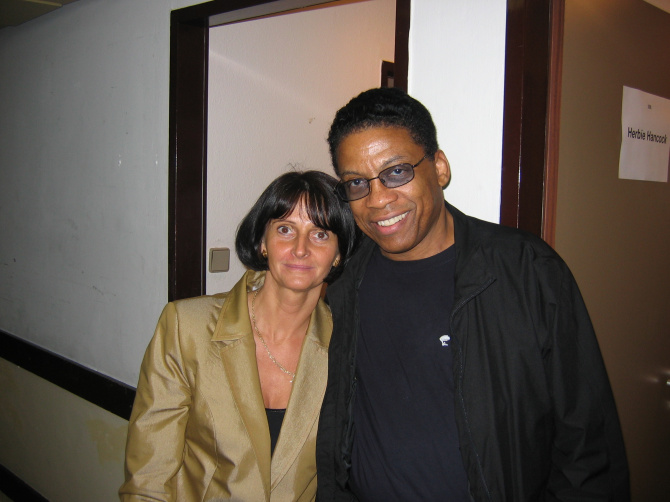
Miután a próba elkezdődött HH turnémenedzsere (sajnos, a nevére már nem emlékszem!), egy londoni görög férfi szólt nekem, hogy nagyon jó, amit catering-ként bekészítettünk Hancock öltözőjébe, de még kellene több csokoládé, mert Herbie „chocaholic”! Gabi azonnal elszaladt, és hozott különböző magyar szájnak különlegességnek számító csokikat a zongoristának.
A Herbie Hancock Quartet így állt fel: Herbie Hancok – zongora, Lionel Loueke – gitár, Dave Carpenter - bőgő, Richie Barshay – dob. Robert Sadin vezényelte a szimfonikus zenekart.
A kétszer 45 perces adásidőt (a Bartók Rádió élőben közvetítette a koncertet!) Hancock mindkét félidőben alaposan túllépte, így Perédi Márta (a mi vendégünk volt!), a Bartók Rádió főszerkestő-helyettese kiment a közvetítő kocsiba és elintézte, hogy a tervezett műsorokat ejtsék le, mert ennek a koncertnek van elsőbbsége!
Hancock nagyon boldog volt a Magyar Rádió Szimfonikus Zenekarának minőségétől, és rendkívül jó kedvvel játszott. És Gabit a szünetben külön megdicsérte a finom csokikért!
Mivel meghívtuk a koncertre Szakcsi Lakatos Bélát és feleségét, Katikát is, a koncert után bemutattam őket „backstage”-en Herbie Hancock-nak.
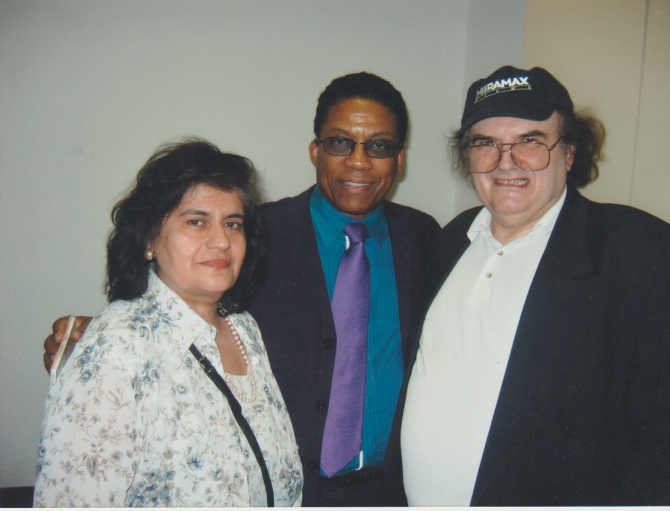
De többen eljöttek egyetemi vizsgakoncertjükről a fiatal magyar jazzisták közül is. Milosevits Mirkó például egy szokatlan kéréssel állt elő: intézzem el neki, hogy a „jazz Isten” aláírja az indexét.
HH meglepődött a kérésen, de aztán mosolyogva aláírta!
¾ 12-kor szóltam Herbie Hancock-nak, hogy induljanak vissza a Royal Szállóba, mert a szerződés szerint csak éjfélig a miénk a BKK.
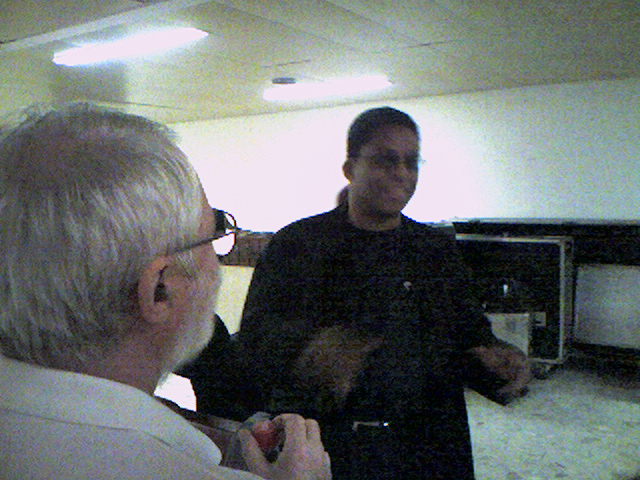
Végül éjfél előtt 2 perccel sikerült magunk mögött hagyni a helyszínt.














